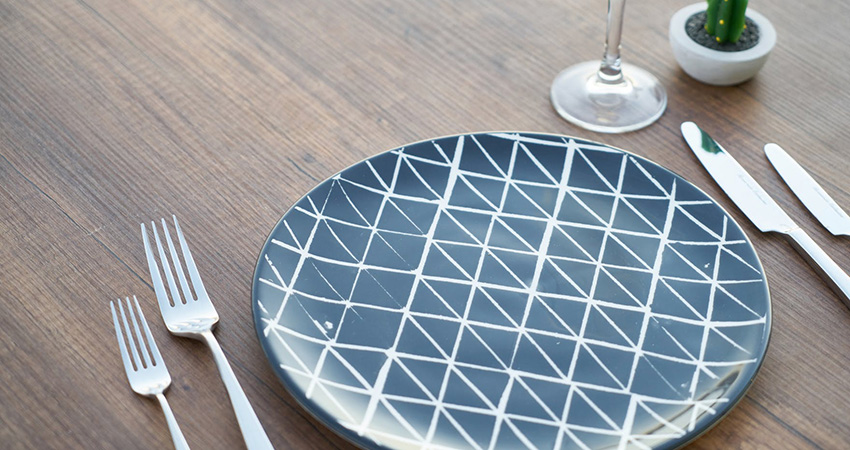The caregiver’s guide to preparing pureed food

But for some seniors, eating the food they once ate may become harder as they age. While getting older does not mean that your mom or dad will have to consume pureed food in order to receive the nutrition they need, it might be necessary if they have a medical condition that makes swallowing difficult.
What exactly is pureed food? It’s food that has been turned into a liquefied or paste form through the process of blending or grinding. Food prepared in this manner is easier to swallow for those who have difficulty swallowing due to medical issues, and it greatly reduces the risk of choking.
Certain soft foods that are already easy to swallow — mashed potatoes, applesauce, pudding, etc. — don’t have to be pureed in every case. But it may be helpful for your parent to start eating some pureed meals alongside those foods in order to get used to the texture of pureed food.
As a caregiver for your parent, you may need to prepare pureed food at one point or another. Read on to find out more about why your parent might require a pureed diet, and how to make pureed food that is still appetizing for them.
Why is pureeing food necessary?
The reason that your parent may need pureed food is clear: Because they have difficulty swallowing. Medically, this is known as dysphagia.
Dysphagia is not uncommon among the older population. The Canadian Association of Speech-Language Pathologists and Audiologists asserts that about one in 10 people aged 50 or older have some type of swallowing disorder — and it is especially likely to accompany certain medical conditions such as strokes and dementia.
For those living in assisted living facilities or nursing homes, that number is even higher. According to a 2013 study, 40% to 60% of residents in these facilities have difficulty swallowing their food. Of course, residents in these facilities have more advanced medical needs by definition, so nursing homes and assisted living facilities are equipped to provide pureed food if necessary.
If your mom or dad has any medical issues that have led to difficulty swallowing, this is where pureed food can help. Because food with this texture is smooth and creamy, it’s far easier for your parent to swallow without risk of choking.
You might wonder about baby food, which is essentially pureed fruits and vegetables mixed with sweeteners, acids, and other ingredients. While baby food wouldn’t be harmful for your mom or dad, it can’t stand in for a pureed meal.
Baby food is designed for, well … babies, not adults. It won’t meet the nutritional requirements necessary for your parent, especially in terms of protein. It may be OK for a quick snack, but don’t get into the habit of using baby food as a meal for your parent in place of freshly pureed food.
Tips on preparing pureed foods

Luckily, preparing pureed foods for your parent isn’t hard. You just need the right tools and a few tips on creating pureed meals that still taste delicious.
Ingredients
The golden rule to follow when it comes to ingredients is this: Most of your ingredients should be smooth, not too thick or chunky. Too many thick foods together will create a strange texture by the time it’s pureed, and it won’t be very appetizing. For instance, pureeing a beef stew that is mostly made up of large beef chunks, without any smooth or thinner ingredients to balance out the texture, won’t turn out well.
Whenever possible, try to include creamy ingredients (such as soups or applesauce) alongside chunkier ingredients. Mashed potatoes and other soft foods are also helpful.
Blending
You might be surprised to learn that a blender and a food processor are two different things. To make excellent pureed meals for your parent, you’ll want the latter.
A high-quality food processor is the best tool for creating the ideal texture and consistency when pureeing. Plus, getting a large food processor means you can puree food in bulk and store meals in the freezer to use later.
You might consider purchasing molds that allow you to shape your parent’s pureed food into a formed mass, which can make eating pureed food more appetizing. Molds are commonly used in assisted living facilities, nursing homes, and hospitals to mimic the sense of eating solid foods. At home, they might be useful for you to create an entree of sorts to be served along with “sides” of other pureed foods.
Thinning or thickening
Once you puree a meal, it might be too thin or too thick for your parent’s needs. Test this by scooping some of the pureed food onto a spoon. If the food runs off the spoon easily, it’s probably too thin. If it sticks to the spoon and won’t come off, it’s too thick.
If the food is too thick, dry, or sticky, try thinning it out with a bit of water or fruit syrup. You don’t want to add too much water, though, as this can make the food tasteless. Using smooth ingredients initially is also a good way to avoid pureed food that is too thick.
If the food’s texture is too watery, you’ll have to add a thickening agent — these might include cornstarch, arrowroot, potato flakes, or a gelatin mixture. Adding a little protein powder can also thicken a pureed meal while giving your parent a nutritional boost. Check with your parent’s doctor or dietitian first, though, to make this is safe for Mom or Dad.
Adding flavor
Of course, a pureed meal with the perfect texture still won’t be very appetizing if it doesn’t taste good.
In most cases, you can add a bit of salt or seasoning to your parent’s pureed meal to give it a little extra flavor. When pureeing meat-based meals, you can add gravy, sauce, or broth. Adding some condensed soup might also be a good flavor booster.
Honey and jelly are helpful for sweetening otherwise bland desserts. Try adding a bit of butter or margarine to pureed potatoes, or even parmesan cheese. Adding some Greek yogurt to meals can also help increase the creaminess while adding flavor and nutrients.
Recipe suggestions
Now that you have a better idea of how to puree food for your parent, here are a few basic pureed food recipes to help you get started.
Beef stew
Add fully-cooked beef chunks and 1/2 cup of liquid, like gravy or beef broth, to a food processor. Add vegetables such as carrots, celery, peas, green beans, or onions, and seasoning to taste. If necessary, you can thicken the puree with a condensed soup like cream of mushroom or even porridge such as Cream of Wheat.
Macaroni and cheese
This is an easy recipe even if you’re a novice in the kitchen. Simply add pre-made macaroni and cheese to a food processor, along with about a cup of skim milk, and blend.
Pureed cauliflower
Many veggies are delicious when pureed, including cauliflower. In fact, pureed cauliflower is even used in the fine dining world. Cook cauliflower thoroughly, blend it in a food processor with a bit of water and seasoning, and you’re done.
Smoothies
Making a fruit smoothie is a great way to give your parent a delicious treat while providing nutrition at the same time. Blend a sliced banana with some of your parent’s favorite fruits. (Strawberries and mango are great options.) Add in Greek yogurt and a bit of milk and blend until smooth.
Remember: Always adhere to any dietary restrictions your parent has, and check with a dietitian or healthcare professional to make sure everything you’re making for Mom or Dad is safe for them. And be sure to test your pureed meal before giving it to your parent. If you don’t like it, they probably won’t either.
Helping your mom and dad swallow their pureed food

While pureed food is easier for your parent to swallow than solid food, it’s not always easy. If you’ll be helping your parent with meals, there are a few rules of thumb to follow to make sure things go smoothly.
Always make sure your parent is sitting up straight while they’re eating their pureed meal. This allows food to move down the esophagus to the stomach without incident. Keep the bites small, and give plenty of time between bites for your parent to swallow.
Make sure Mom or Dad has a full glass of water nearby so they can drink between bites. This helps move food to the stomach and keeps your parent’s mouth moist, making chewing and swallowing easier.
You may want to encourage your parent to enjoy varying bites from different foods on the plate to keep things interesting, rather than finishing off one pureed dish before starting on the next. However, it’s entirely their preference.
Pureed food for your parent
Armed with a good food processor and a few easy recipes, you can get started making delicious and nutritious pureed meals for your parent if necessary.
Practice getting the right consistency and making flavorful meals, and always check with a healthcare professional or dietitian if you’re unsure about a particular ingredient or dish. This ensures that Mom or Dad gets the essential nutrients they need while still enjoying the foods and flavors that they like.
Have you prepared pureed meals? What has been your experience? We want to hear your story.








